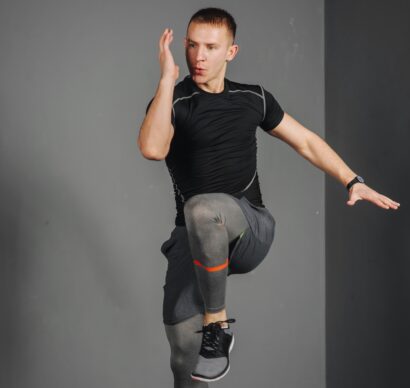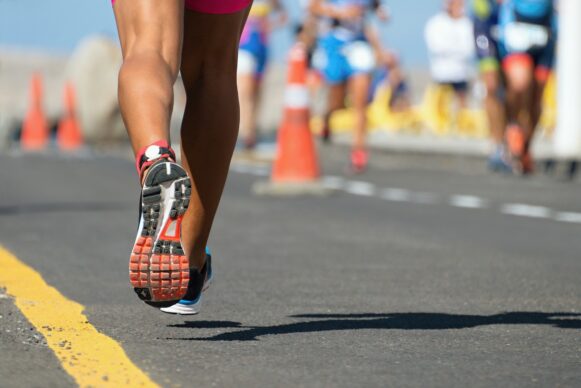by Devin Blessing PT, DPT, OCS
Proximal hamstring tendinopathy is a fairly common injury in distance runners that’s often missed or mismanaged. As high as 60% of hamstring injuries experience recurrence and they often take three to six months to return to previous level of play. Understanding how to properly address these injuries is key to returning to running in a timely manner.
Proximal hamstring tendinopathies and hamstring strains are two very different injuries. Everybody is familiar with a hamstring strain. You are sprinting down the track or the field and you feel a “pop” or a pull in the back of your thigh. This quite painful experience is a hamstring strain. A proximal hamstring tendinopathy comes on over time from repeated stress to the tendon without the ability to fully recover. This is why these injuries occur more frequently in distance runners compared to their counterparts.
The location of pain in a proximal hamstring tendinopathy is typically close to the buttock where the hamstring attaches to your ischial tuberosity, whereas a hamstring strain is typically in the middle of your posterior thigh. Although less painful, a proximal hamstring tendinopathy can take longer to recover due to the poor blood supply of the tendon. The good news is that if you handle it correctly, you can continue running while rehabilitating it.
The key feature in successfully rehabilitating any tendon injury is this: you need to “load the tissue with the issue.” Too often, I see runners who are struggling with this condition focusing on glute and core exercises instead of hamstring exercises. I’m not sure if it’s because they are just consulting Google or someone told them their pain is because their “glutes don’t work,” but either way, you need to “load the tissue with the issue” if you want to recover. Below, I will take you through a simple hamstring loading progression for a runner struggling with a proximal hamstring tendinopathy.
First, we will load the hamstring isometrically with a single-leg hamstring bridge.
Single Leg Hamstring Bridge Exercise
(3 x 30” holds)
Since the primary way a hamstring functions while running is eccentrically, we need to load it in
a similar fashion. I like to use a single-leg RDL to do this. Make sure you continue to increase the weight with this exercise as you are able. Most people runners don’t load themselves enough!
Single Leg RDL Exercise
(3 sets x 8-12 reps)
Finally, we will expose the hamstring to more explosive movements with a kettlebell swing.
Kettle Bell Swing
(3 sets x 8-12 reps)
If you have successfully gone through this exercise progression and your hamstring is tolerating these loads, you should be ready to start a guided return to run program. If you are still having difficulty getting rid of your pain, schedule an appointment with one of our PTs so we can help you get back to running without pain!
For more exercises to help prevent running injuries, check out our post on targeting commonly overlooked muscles for runners.




